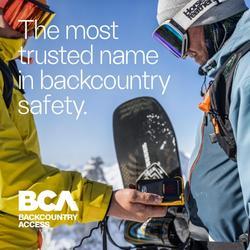As noted above, in the upper elevation terrain that has close to a meter of snow, the mid pack advanced facets were showing early signs of chaining. This combined with the consolidating of the overriding slab above this buried weak continues to indicate that the ECT Tests may be providing "false negitives" for identifying the propensity for propagation in our snowpack. The ECT test may not be the best test for our snowpack at this depth with the overriding slab dissipating the compressional forces of the loading steps. As stated before, the best test for identifying the potential reactivity of our current PWL (in areas with a deeper snowpack) may be the PST.
Pit at 9400 feet, WNW, 20 degree slope angle, HS: 85 cm: the December pre-storm interface was down 41 cm, and in this location and there were 5 to 7 cm of 3 mm advanced facets that were showing early signs of chaining. Scores at this interface were: ECTN and CTM SC. Most interesting were CTM SP at 26 down in .5 mm facets (December Storm-18 hour Break in precipitation when we got NSF’s and or SH developing). This layer continues to remain reactive and is worrisome, as it may initiate first when we get a load and then step down.



